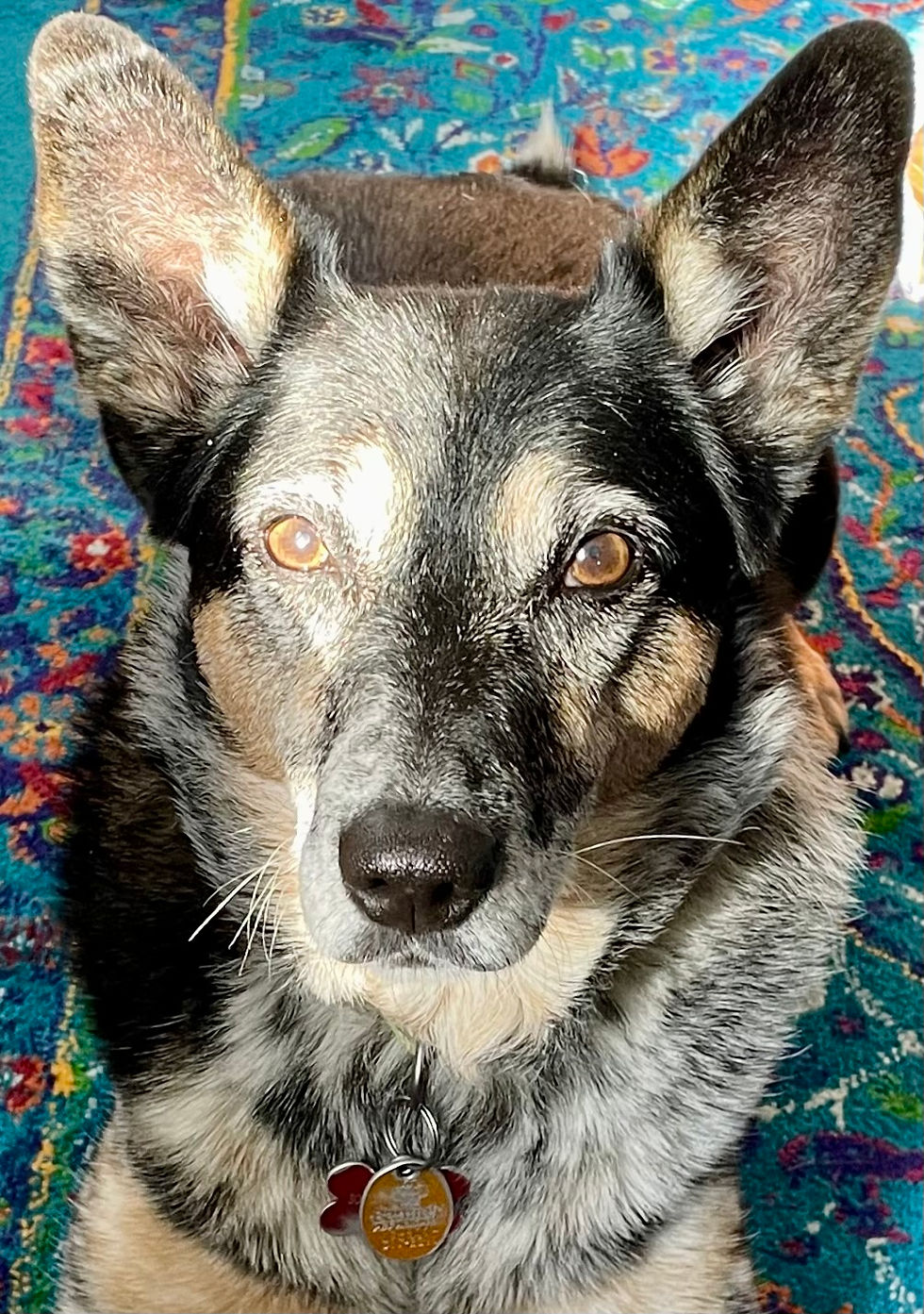To Pet or Not to Pet
- Virginia Dare

- Apr 19, 2022
- 3 min read
Have you ever noticed how some dogs really enjoy petting, never seeming to get enough, while others are fairly reserved or selective about when they want it? Or, that petting may only be appreciated from a few select individuals?

As primates, we want to use our hands -- a lot -- to make contact with our dogs. By observing a dog carefully, he will clearly communicate whether he desires contact from you or not. The dog who is eager for contact is very easy to understand. He approaches with a relaxed, happy face and a waggy tail, stepping in close to us. If stationary, he may indicate his desire for petting by nudging or pawing your hand, clambering onto your lap to snuggle, or offering a relaxed belly-up posture to invite a rub.

It's especially important to learn to read the subtle communication a dog telegraphs when he prefers not to be touched. Some of these signals may include averting his gaze, turning his head away, licking his lips, yawning, leaning or ducking away.
The way you touch the dog, and where you touch, can matter quite a bit, too. While many dogs don't appreciate head pats, or hands reaching over them to touch the top of their back or shoulder area, a scratch under the chin or on the chest may hit the sweet spot. Other dogs may love a scratch behind an ear or at the base of the tail.
Even our own beloved dogs may not always want to be pet, and they shouldn't have to endure it just because we're feeling handsy. So I'd like to challenge you to try out a simple petting consent test with your own dog, at different times of day, and observe him carefully to see how receptive he is to contact at that moment.
Here's an example of a petting consent test I did with WildeBean, who is quite selective about when she wants contact and when she prefers to be left alone. The steps are simple -- begin with just a few seconds of petting contact on a part of the dog's body that he likes having touched, and then pause to see what the dog does during the pause. Does he ask for more contact, or does he quietly ignore you or even move away? As I hope you'll see in this video, WildeBean was definitely saying yes to more petting.
In contrast, here's a petting consent test I did with VagaBond. Although he initially sniffs my hand (hoping I might have food), he shows plenty of signals that say he'd prefer no petting, including lip licks, averted eyes and averted head. Honoring the subtle signals means the dog doesn't have to escalate his communication, whether that means leaving the scene, grumbling, etc. (I regularly work with clients whose dogs escalate to air-snapping or even biting when their subtler signals are continually ignored.)
On a slightly different tangent, I'd like to mention a couple other circumstances when petting is best avoided. One is with certain overly enthusiastic greeters: this dog clearly wants to be near you, often invading your space with jostles and jumps, but if you try to pet him, he just gets more amped up. In this situation, it's best to wait to touch the dog after he's settled down. Similarly, when a puppy is in high-energy mode, trying to pet him at this time often results in lots of bitey behavior.
And finally, when a dog who is initially fearful or reactive towards you finally tiptoes over, in most cases it's because he wants to sniff you to gather information, NOT because he wants to be pet, so it's best to keep your hands off. I encourage you to check out this previous article, where I discuss other important details about being respectful of dogs we're just meeting, and deciding whether to interact (or not), especially if it's a shy or fearful dog.
Virginia Dare is a certified dog trainer & behavior counselor with decades of experience. Her business offers live video consultations anywhere in the US for training and behavior help, along with pre- and post-arrival counseling for new puppies.
She also provides in-home, private lessons and behavior consultations in northern Fairfield and Westchester counties, western New Haven county, Putnam and southern Dutchess counties.
Please visit www.NorthStarCanines.com/services to learn more, or contact me at 804.784.0120



Comments